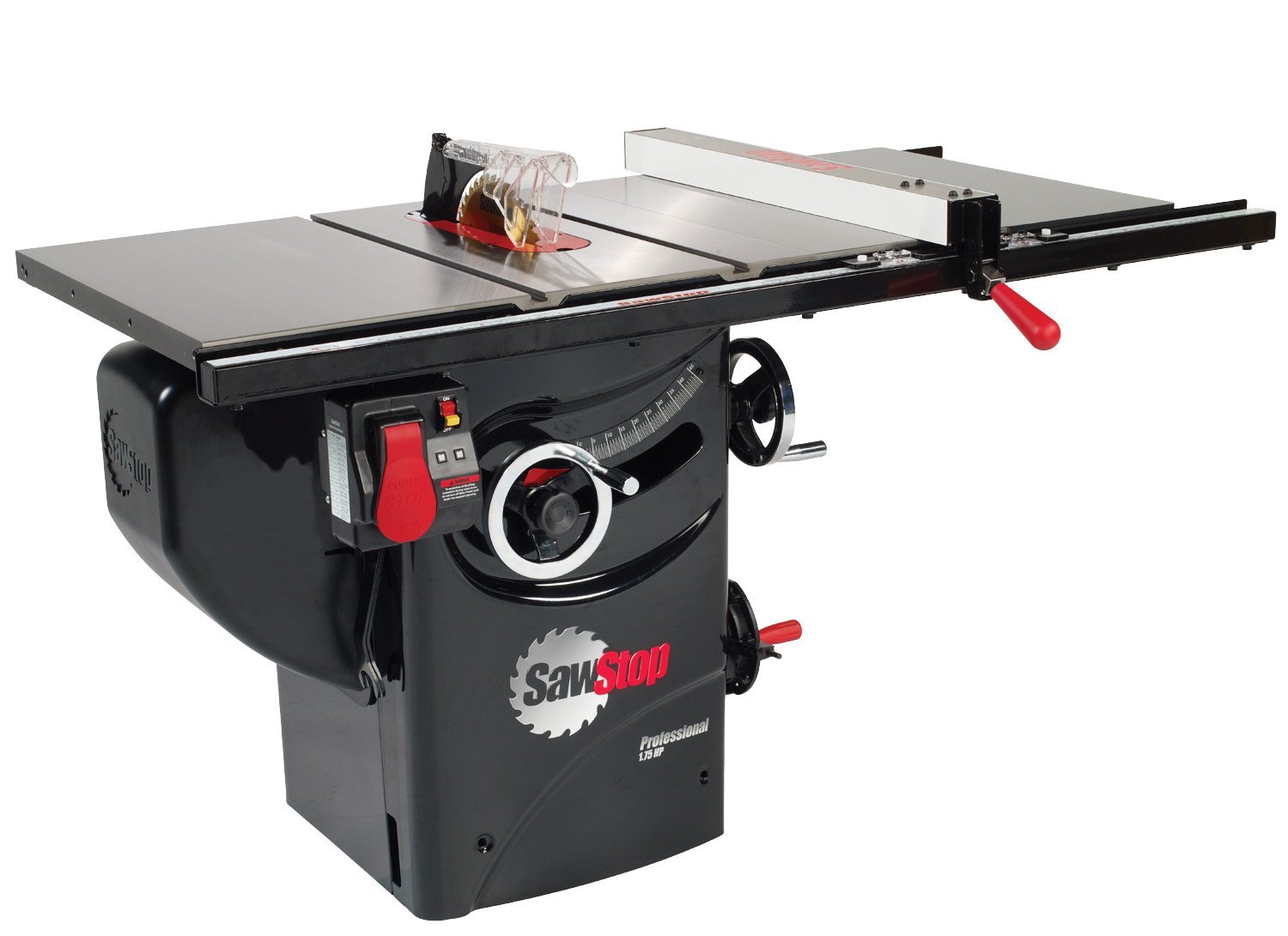Cabinet Saw

Safety Guidelines:
This type of saw has a blade protruding from the table and is used to cut wood. This table saw is a sawstop which means that it detects anything that is mildly conductive (including skin) and will disengage the blade as a safety feature. (DO NOT TEST TO SEE WHETHER OR NOT THIS IS TRUE).
First, examine the stock for foreign objects such as nails or staples. If any are found, do not run stock through the table saw before removing all objects. Metal will deploy the safety features which damages the blade and forces RCMAKES to replace the safety cartridge.
Wear eye and ear protection while using the saw, avoid wearing loose-fitting clothes and do not wear dangling jewelry.
Do a visual check of the table saw before turning it on in order to ensure that it is in working order. This includes checking the blade guard and the anti-kickback pawls for proper operation.
Check the tightness of the blade.
Set the saw blade to the appropriate height. As a general rule, do not have it any higher than necessary which is slightly above the maximum height of the stock (no more than ⅜ inch higher).
Do not stack multiple pieces when cutting.
Set the fence to the appropriate distance from the blade before starting and do not make adjustments to the fence while the saw is running.
Be sure to not touch the riving knife when the sawstop safety system is armed as touching it will trigger the sawstop.
Always support the stock as it is cut behind the table saw.
Always use a push stick when cutting small pieces and when the workpiece is within 6” of the blade. Always keep fingers clear of the blade and do not reach over or behind the blade to pull out stock.
Never position your hands or fingers in the path of the blade.
If you feel the saw blade slow down when you are cutting, slow the feed rate.
Turn off the saw and wait for the blade to stop spinning entirely before clearing away scraps or grabbing stock.
Do not release the workpiece until it is all the way past the back of the table saw blade.
Turn off and unplug the tablesaw and allow the blade to stop completely before changing the blade.
Do not saw pieces freehand.
Do not saw stock that is twisted, warped, or doesn’t have a straight edge.
When ripping, apply force between the blade and the fence to avoid jamming and kickback.
Always use a sled or miter gauge when crosscutting.
How to Use:
Make sure the metal you are using is ferrous (steel only). Do not grind aluminum, copper, bronze or brass.
Flip the switch in the middle of the machine to the on (left) position.
wait for it to come to full speed before touching material to it.
Make sure the piece of meatal is secure (ie. holding it in a vice grip).
Begin grinding the meatal until you are finished.
Switch the machine to the off (right) position.